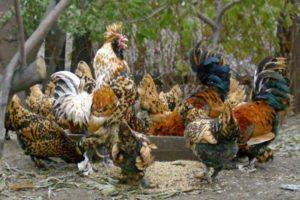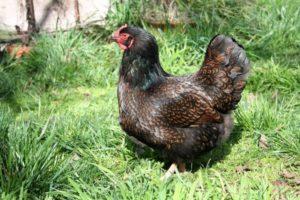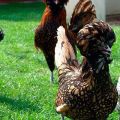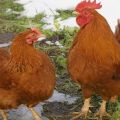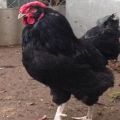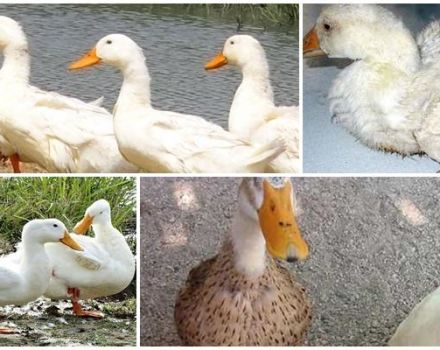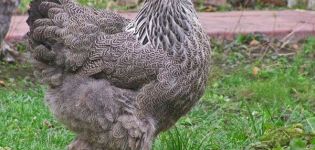Description and rules for keeping chickens of the Super Nick breed
Super Nick chickens are very popular with farmers. This is due to a number of advantages of such birds. They are characterized by excellent performance, disease resistance and ripen quickly. At the same time, birds are absolutely unpretentious in care. To achieve success in growing them, it is worthwhile to properly organize the poultry house and choose a balanced diet.
Breeding history
The cross was developed by German specialists. Scientists aimed to create an ideal laying hen, which does not have a tendency to frequent diseases, but at the same time is highly productive. In 2005, the hybrid came to Russia and quickly became popular.
Description and characteristics of the breed
For birds of this breed, certain features are characteristic. They are distinguished by their excellent appearance and high productivity.
The appearance and physique of Super Nick chickens
Chickens of this breed have the following features:
- light red leaf-shaped crest and earrings of the same shade;
- dense white feathers that have a smooth surface;
- white earlobes;
- compact body;
- rounded chest;
- gray beak;
- small back;
- medium-sized head;
- gray-yellow paws of the limbs.

Cross temperament
These are quite active chickens. They move rapidly and are fussy. Individual farmers keep birds in cages. At the same time, birds like to move more.
Incubation instinct
Layers of this breed have lost the ability to plant eggs. At the same time, it is pointless to remove chickens from the cross. They will not inherit the characteristics of the breed. It is best to purchase chickens from breeders from time to time.
If you want to breed chicks yourself, you will have to use an incubator.

Breed productivity
This breed is characterized by high productivity:
- females weigh 1.6 kilograms, males - 2-2.3;
- birds are characterized by early maturation;
- birds begin to lay eggs at 4 months;
- egg production parameters reach 340-350 eggs per year;
- the duration of egg production is 19-90 weeks;
- preservation parameters of young individuals reach 96-98%;
- survival rates of adult birds are at the level of 90-95%;
- the weight of 1 egg reaches 55-60 grams - in adult birds, this figure increases to 70 grams.

Advantages and disadvantages
The advantages of the breed include the following:
- rapid maturation;
- unpretentiousness to conditions of detention;
- high parameters of egg production;
- disease resistance;
- resistance to temperature drop.
At the same time, birds also have certain disadvantages:
- restless disposition;
- tendency to excessive weight gain;
- short period of productivity;
- lack of maternal instinct.
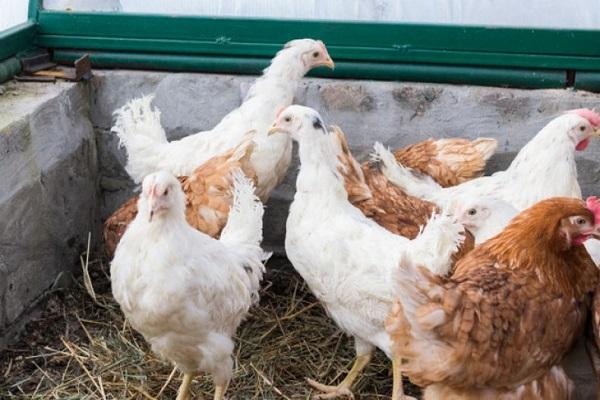
Subtleties of content
Birds can be placed in an ordinary chicken coop or caged training from the beginning of life. By keeping birds in cages, it is possible to reduce the need for food.
In a chicken coop with a walk
Such birds easily adapt to environmental conditions and are unpretentious. It should be borne in mind that chickens are characterized by frost resistance. Even in the cold season, the premises may not be heated. However, this negatively affects the performance of birds.
Birds should be provided with the following conditions:
- humidity - 60-70%;
- temperature - + 14-19 degrees;
- the duration of daylight hours is 13 hours.

These chickens fly well. Therefore, with free-range birds, it is worth taking care of the organization of a high fencing from the net.
When breeding birds in a walking house, it is worth considering the following recommendations:
- the chicken coop should be wooden - it should be well insulated for the winter;
- the floor should be made of wood - while cement or clay is also quite acceptable;
- provide ventilation using vents or pipes with a plug;
- make windows 10% of the floor area - while the frames should be double and removable;
- make a walking area near the chicken coop;
- place perches in the hen house - they are made of wooden beams;
- put a litter on the floor - it is made from sawdust, hay or straw;
- disinfect and dry the room in the fall;
- there should be 5 birds per 1 square meter of the chicken coop;
- place trays for droppings under the perches;
- the height of the room should be 1.8 meters;
- There should be a sufficient number of drinkers and feeders in the house.
In cages
When growing birds in this way, you should also follow some rules:
- provide 1 chicken with at least 400 square centimeters of area;
- 1 chicken should have 10 centimeters of the feeder;
- there should be 4-6 birds per nipple of the drinker;
- systematically ventilate the room.
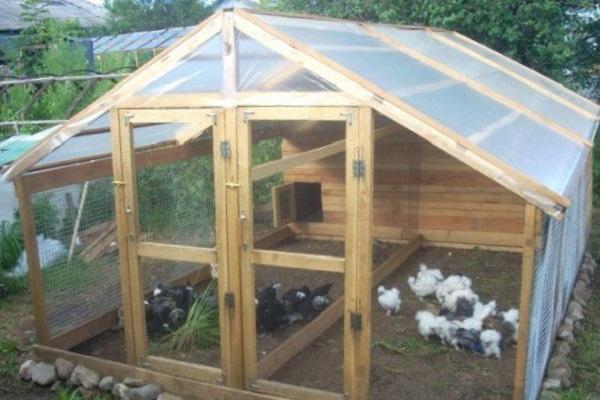
Bird molt
Molting of chickens of this breed occurs out of season. If the daylight hours have the same duration, there is no decrease in egg production during molting.
When do you plan to replace the herd?
The timing of the change in livestock depends on the duration of egg production. This breed has a slight decline at 66 weeks. At 89 weeks, egg production is halved. It is at this age that the replacement of livestock is performed.
What to feed?
To achieve high bird productivity, it is important for chickens to provide a correct and balanced diet.
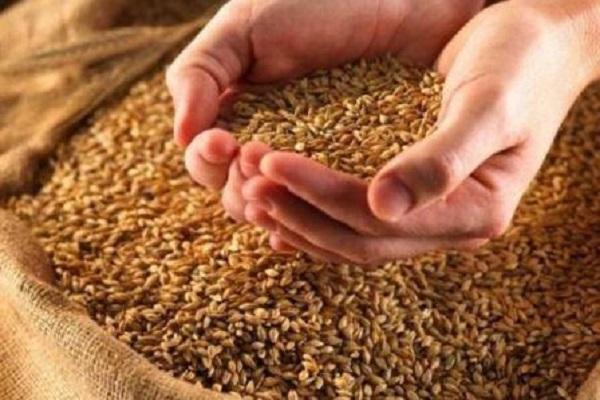
Adult chickens
The amount of food is determined by the characteristics of the birds. If they are in cells and spend less energy, it is recommended to reduce the amount of food. If the birds are free-range, the amount of food should be increased.
Seasonal factors do not affect the diet of birds, since egg production is not determined by seasonal factors. It is stable even in winter. The diet should be adjusted during the period of approaching the first clutch - this is observed at 3.5 months.
To increase egg production, it is worth introducing more calcium into the diet of birds. The amount of this substance should be 2.5% of the total food volume. At this time, there is a need for more protein products - especially of animal origin.
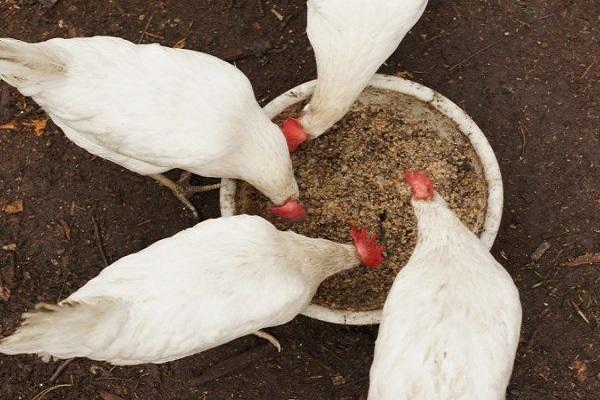
When organizing food, dry food is used on an industrial scale. This reduces labor intensity and costs.
- Chickens should be eaten at least 3 times. This must be done at the same time.
- It is important to consider the propensity of birds to obesity. With cellular content, the threat of weight gain increases. In such a situation, calorie content is reduced.At the same time, instead of nutritious food, greens and low-calorie foods are used.
The diet of chickens should contain the following foods:
- cereals - millet, wheat;
- greens - knotweed, nettle;
- fish or meat and bone meal;
- wet mash - you can put yogurt into the composition;
- boiled or fresh vegetables - cabbage, potatoes;
- sunflower cake.
To ensure the intake of calcium into the body of chickens, it is worth additionally using fish and crushed eggshells. Egg sizes increase with age. This means that the calcium requirement of chickens increases.
Separately, sand or small gravel should be added to the feeders. These substances facilitate digestion and normalize metabolism.
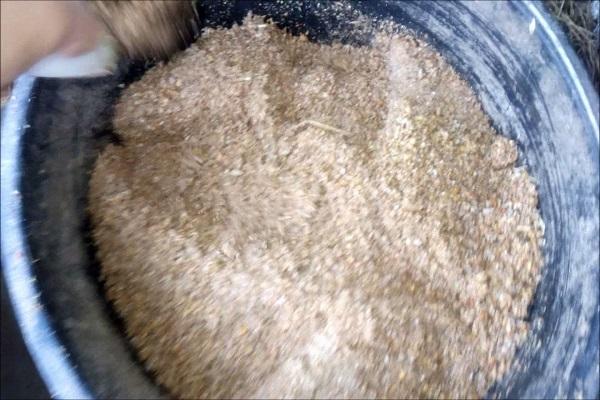
Chicks
Chickens of this breed need an adequate feeding regime. They must eat at a specific time. In industrial conditions, chicks are fed with special homogeneous compositions. Their rate should be gradually increased as the birds develop.
When growing birds in small farms, it is permissible to use compound feed containing vitamins and minerals. Up to 10 days of life, chicks should be fed with an interval of 2 hours. This can then be done every 3 hours.
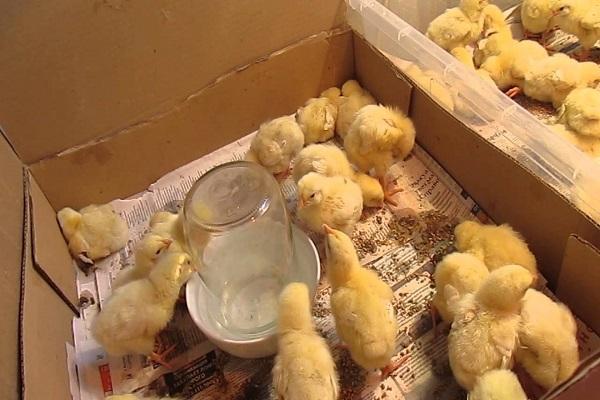
When feeding chicks, you should follow these recommendations:
- in the first 3-7 days, they should be given a boiled egg with nettles and porridge;
- give grass to birds - knotweed is especially useful;
- introduce vegetable components into the menu - potatoes, tomatoes, zucchini, carrots;
- on the 5th day of life, instead of eggs, you can use boiled meat and cottage cheese;
- on the 12th day, instead of porridge, a mash is introduced;
- once a week give sprouted wheat;
- at 51 days it is permissible for birds to give whole grains.
Chicks must have access to fresh and clean water at all times. This is very important for the normal development of birds. If automatic drinkers are used for growing birds, it is worth assessing their serviceability. This helps to avoid dehydration, which often leads to negative health effects.
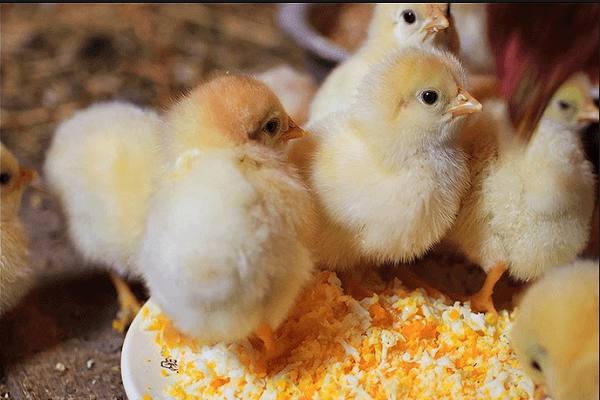
Breeding features
It is not recommended to breed birds of this breed on your own. Chicks of crosses are not able to inherit the characteristics of their parents. In addition, hens do not have the incubation instinct. If, nevertheless, self-cultivation is planned, it will not be possible to do without an incubator..
Disease prevention and parasite control
With proper care and timely vaccination, chickens practically do not face dangerous diseases. At the same time, it is important to vaccinate birds against dangerous pathologies that can lead to the death of the entire livestock.
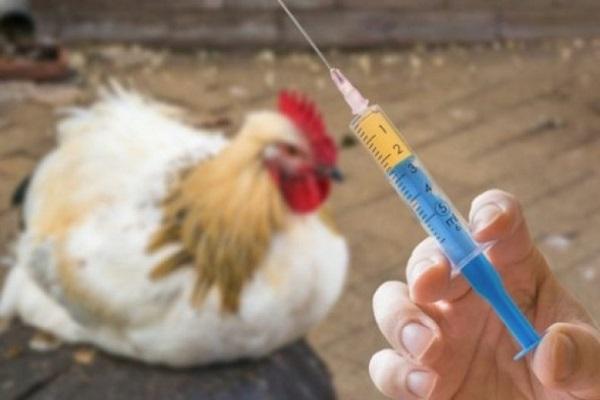
In the early stages of development, birds need to be vaccinated against Newcastle disease, bursitis. Also get vaccinated against infectious bronchitis. After 1 month, you should definitely do a revaccination. This contributes to the correct formation of immune responses. In addition, you should be vaccinated against encephalomyelitis. Also, birds are vaccinated against avian pox.
Super Nick chickens are highly productive, which is why they are very popular with many people.
To achieve success in growing feathered birds, they need to provide complete and high-quality care.
